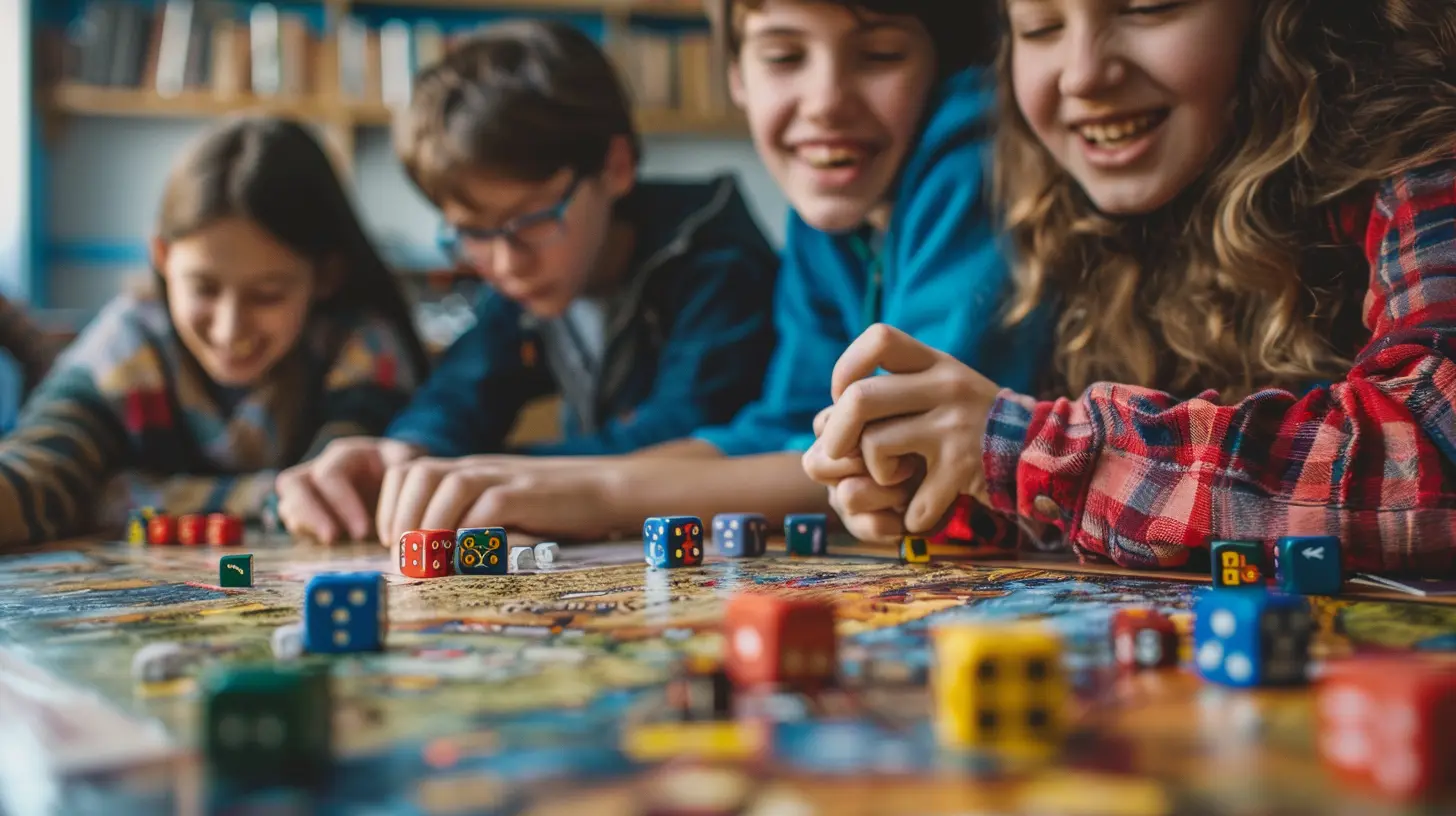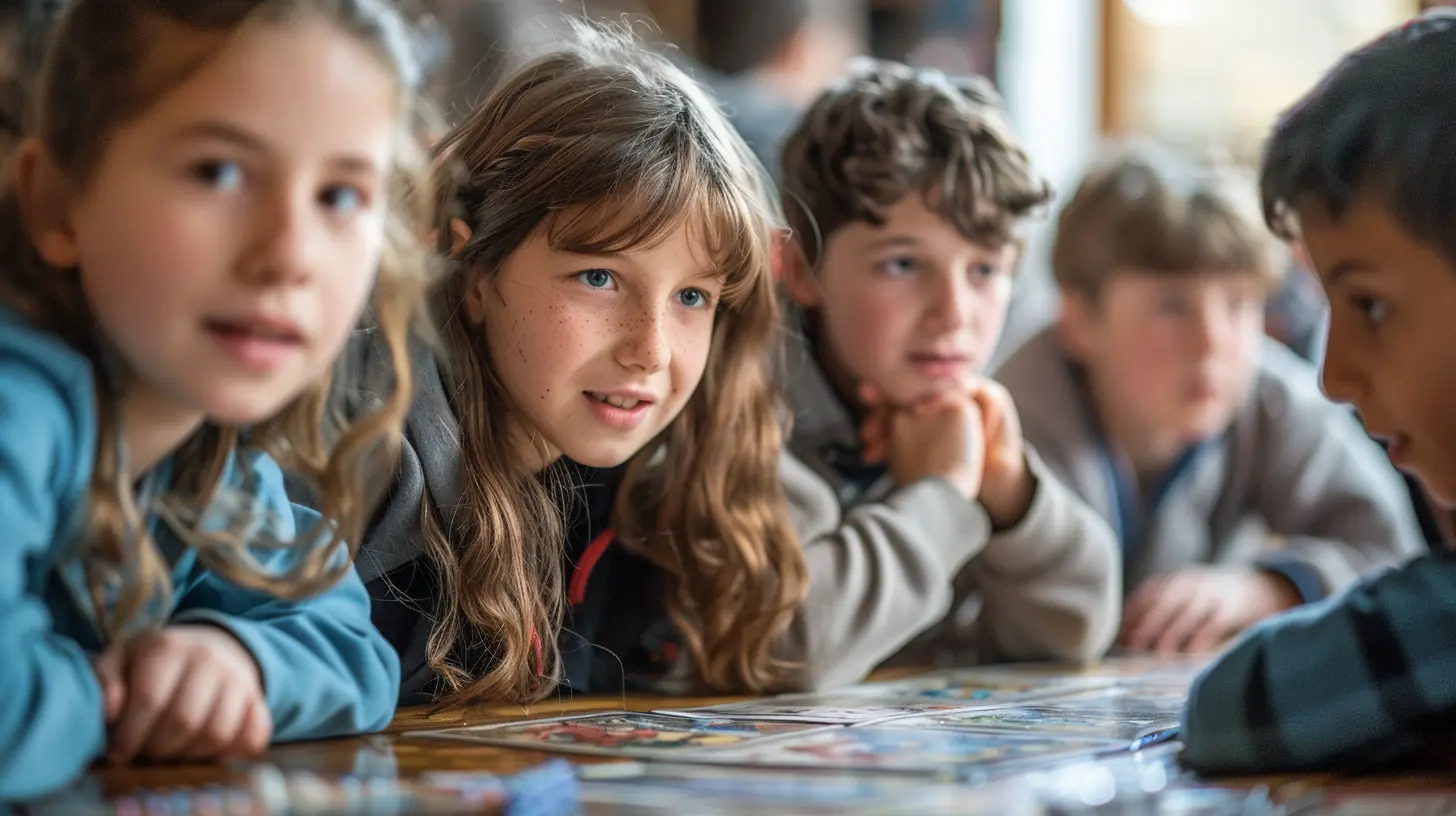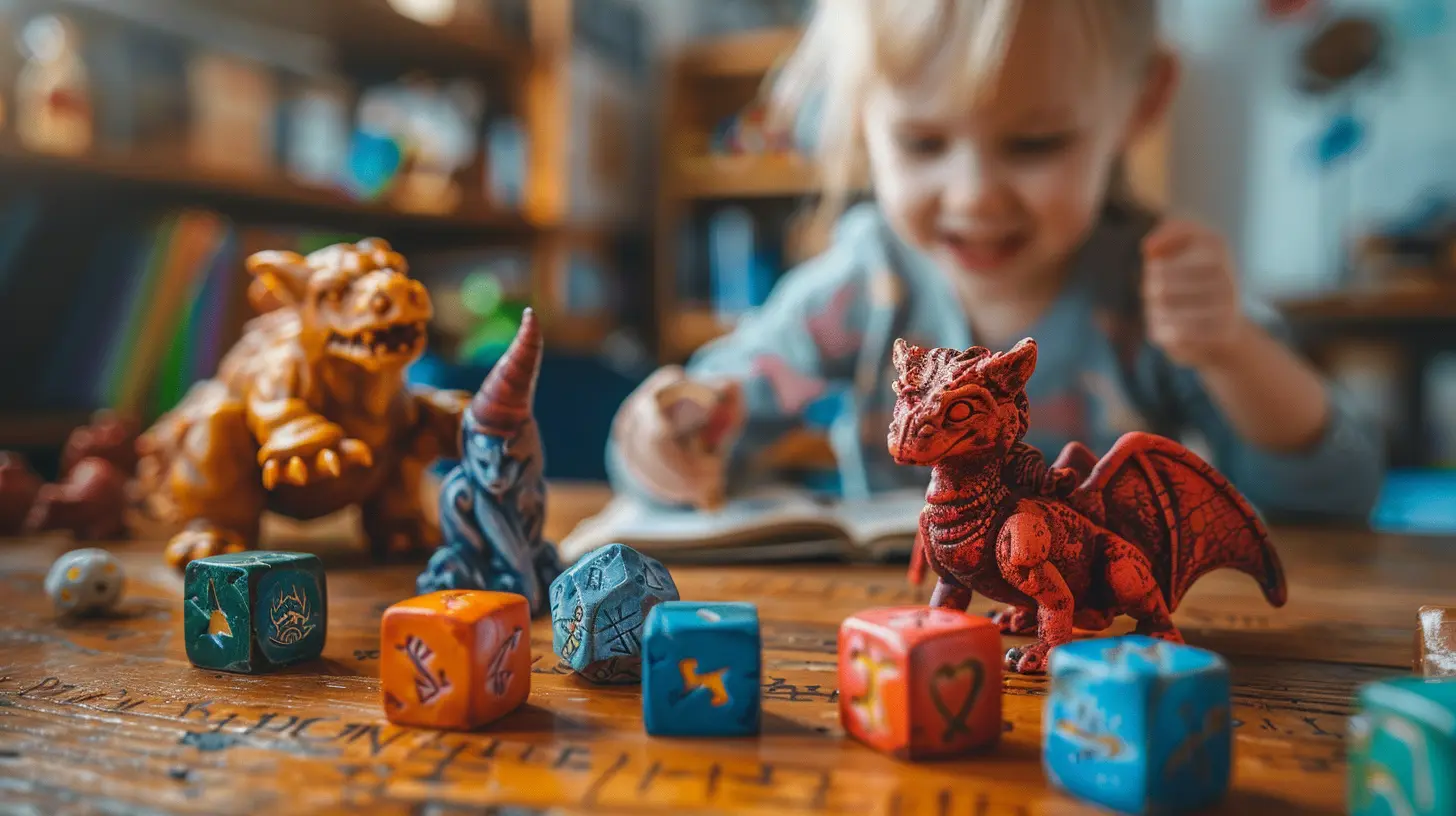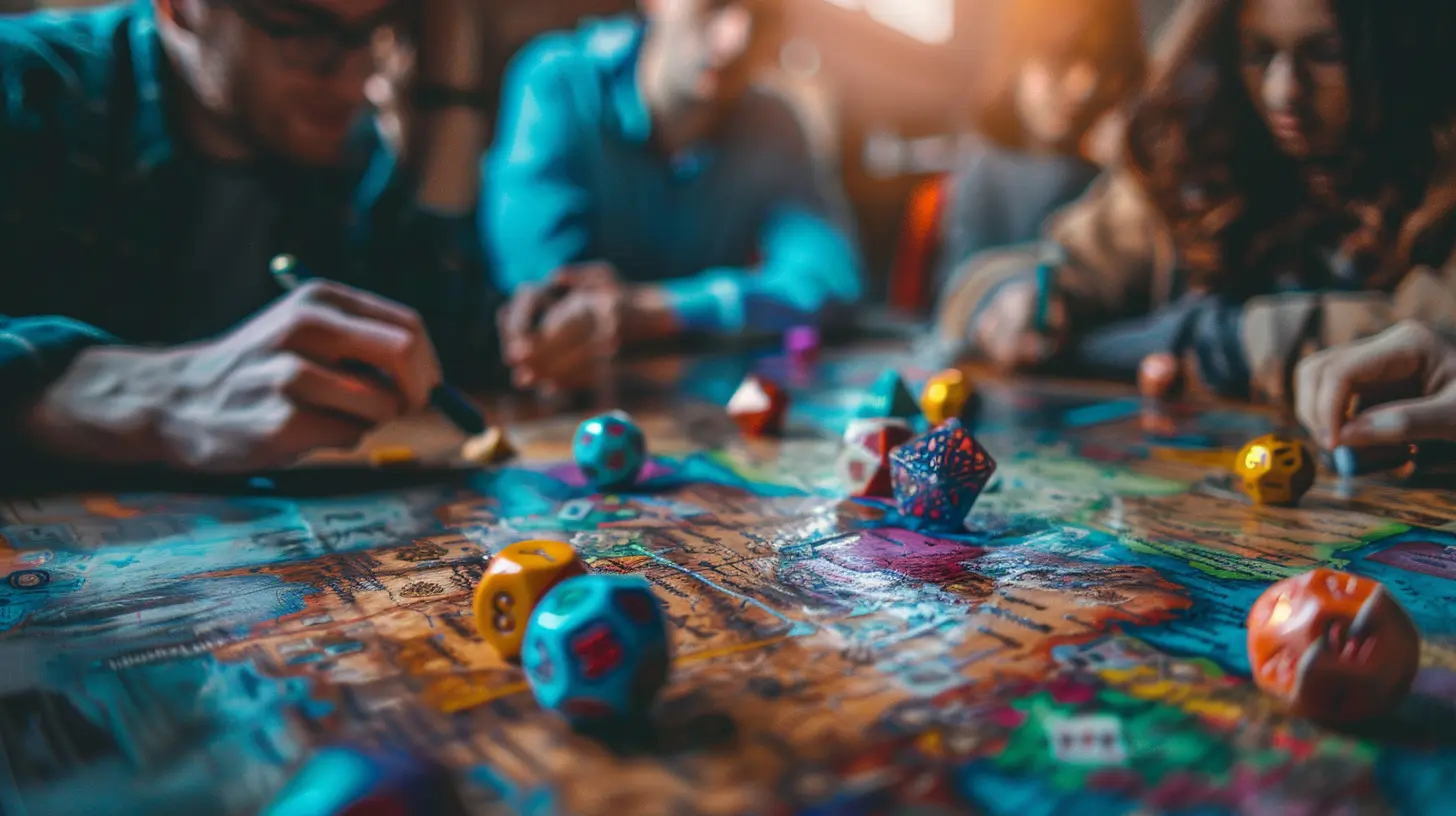Using Role-Playing Games to Enhance Classroom Learning
1 August 2025
So, you're telling me kids are sitting in classrooms, slowly turning into zombies from endless worksheets, when we could be sending them on wild quests to save kingdoms and solve mysteries? Yep. That's where role-playing games (RPGs) come in—ready to roll initiative and cast a fireball on boring lessons.
Seriously though, what if I told you that casting spells, slaying dragons, and negotiating peace treaties with goblin warlords could actually enhance education? Buckle up, because we’re diving into the magical (and slightly ridiculous) world of using role-playing games to enhance classroom learning. And no, you don’t need to wear a wizard hat to join in… but it sure doesn’t hurt.
What the Heck Are Role-Playing Games Anyway?
If you’re picturing a bunch of kids dressed as elves around a table shouting about goblins while rolling dice, you’re… actually not too far off.Role-playing games—like Dungeons & Dragons—are collaborative storytelling experiences where each player takes on the role of a character and helps build a narrative together. It’s like improv theatre met a math test, made a baby, and that baby grew up to teach English.
There’s typically a game master (GM for short, or Dungeon Master if you're fancy) who guides the story, and players respond as their characters. Dice rolls determine success or failure, but the real magic? It’s in how players solve problems, interact, and think creatively.
Why Even Bother with RPGs in the Classroom?
Teachers already juggle more hats than a fantasy innkeeper. So why add dragons to the mix?Well, hold onto your enchanted quills, because RPGs can tick off a surprising number of educational boxes—all while keeping students more engaged than a YouTuber's clickbait thumbnail. Let’s break it down:
1. Critical Thinking? Check.
Forget multiple-choice tests. In RPGs, students must calculate their options, assess risks, and make decisions based on limited info. Should they sneak past the ogre, try to reason with it, or go full barbarian? Each choice requires strategy and consequences. That’s basically life training, my friends.2. Communication Skills (With Less Eye-Rolling)
Have you ever tried getting a teenager to speak up in class? Now tell them they’re a rogue trying to bluff their way past a guard—and suddenly, it’s Oscar-worthy acting.RPGs encourage speaking, listening, persuading, negotiating… all that good social-stuff teachers try to cram into presentations anyway. It’s participation, but fun.
3. Collaboration—Team Projects That Don’t Suck
Working as a party in an RPG means students actually have to work together. No hiding in the back while one kid does all the work.Need to solve a puzzle? Everyone has a role to play. Whether you're the squishy wizard or the meat-shield warrior, you’re part of the team. And better yet? No one gets left behind (unless the party forgets them in a trap room. Oops).
4. Creativity That Goes Off the Charts
No, Timmy. Your science fair project can't just be you drawing lasers on a potato. But in an RPG? That kind of creative thinking is gold.Students build characters, write backstories, and invent wild solutions to problems. They might not realize they’re learning narrative structure, cause-and-effect, and descriptive writing—but they absolutely are.
5. Emotional Development (AKA Empathy Mode: Activated)
Playing different roles allows students to see through other perspectives. When you roleplay as a character from a different background—or even a completely different species—you practice empathy in a way textbooks just can’t teach.
But... Can You Actually Teach Curriculum With an RPG?
Let’s squash the myth before it grows wings and flies away: RPGs aren’t just about fantasy. You can use role-playing games in any subject, with a little creativity.History: Time Travel, Baby
Who needs another lecture on the American Revolution when your students can actually be there? (Okay, not literally.) Create a storyline where students take roles as revolutionaries, spies, or diplomats. Suddenly, they're negotiating with King George instead of zoning out during a PowerPoint.Science: Mad Scientists Unite
A mysterious illness is spreading through the kingdom… it’s up to the students to research different bacteria, design experiments, and develop a cure before it’s too late. Real science, real stakes, imaginary plague. Who says learning can’t be dramatic?Math: Dungeon-Crawling with Calculations
Forget the dreaded "When will I ever use this?" Students solve puzzles, calculate distances, manage resources, and optimize stats—all while exploring dungeons. It’s like tricking them into doing math because treasure is involved. Diabolical? Maybe. Effective? Absolutely.English and Language Arts: Character Arcs for the Win
Build character backstories, write campaign journals, or analyze NPC (non-player character) motives. Suddenly, writing isn’t a chore—it’s how you survive the next encounter.
But My Students Are Wild! Will RPGs Work with Them?
Short answer: Yes.Long answer: Yeeeeeesssssssssss. (With a caveat.)
Sure, a bunch of 8th graders hyped on sugar might not immediately sit quietly and strategize a battle plan. That’s okay. The beauty of RPGs is their flexibility. Start small. Begin with simplified mechanics or even story-based roleplay without dice. Test the waters before unleashing full epic campaigns.
Remember: the goal isn’t to create a perfect game session. It’s to engage students in a new way. And if the rogue accidentally sets the classroom on fire (in the game, of course), that’s still a teachable moment. "Cause and effect", right?
Teachers Don’t Need to Be Nerd Gods (But It Helps)
You don’t have to be a level-20 Dungeon Master with a dice collection that outnumbers your socks. Here’s what you really need:- A Simple System: Start with kid-friendly TTRPG systems like “No Thank You, Evil!” or “RPG Kids”. Heck, even a choose-your-own-adventure setup works.
- A Loose Plan: Have a plot in mind, but let the students shape it. You’re more of a guide than a god.
- A Sense of Humor: Players will try to tame dragons with chicken nuggets. Roll with it.
- Some Dice: Get physical or go digital. There are tons of free dice apps if you’re dice-less.
Pro-tip: There are even pre-made educational campaigns out there that align with curriculum goals. You don’t have to invent everything from scratch—unless you want to, you overachiever.
RPGs and Neurodiversity: A Match Made in Fantasy Heaven
Role-playing games aren’t just engaging—they’re inclusive. For students with ADHD, autism, or anxiety, RPGs offer structured fun with space for expression.- ADHD? The fast-paced, high-stakes storytelling keeps things engaging.
- Autism? Clear roles, routines, and social practice in a safe setting.
- Anxiety? Characters offer emotional distance that makes social interaction feel safer.
Basically, it’s a party where everyone’s invited—and everyone’s important.
Real Teachers, Real Results
This isn’t a made-up tale from a bard with too much mead. Teachers around the world are using tabletop RPGs (TTRPGs) and reporting things like:- Increased student engagement
- Higher test scores (yep, for real)
- Better group cohesion
- Improved literacy and writing skills
- Less resistance to participation
Need numbers? Studies (yes, academic ones!) suggest that students involved in RPG-based learning show better problem-solving abilities and increased motivation.
Translation: This stuff works.
Okay, But What About Time?
“Sounds cool,” you might say, “but I’ve got 52 standards to cover before lunch.” Fair point.Good news? RPGs can be modular. Think of them like elective sprinkles on your teaching sundae. You can run one-off scenarios for a specific lesson or build a longer campaign spread over weeks. Even 20 minutes a week can make a difference.
Pro-tip: Use “gamified” elements like XP (experience points) for behavior, stat sheets for progress tracking, or character journaling as writing assignments. It all blends together better than your classroom’s morning coffee.
Getting Started: Roll for Initiative, Teach Like a Boss
Ready to unleash your inner game master? Here’s a basic checklist to get you going:1. Pick a Simple System – Or make your own.
2. Choose a Learning Objective – History, math, science? Take your pick.
3. Create a Story Hook – “The kingdom’s crops are dying!” Boom. Instant science lesson.
4. Make Characters – Let students design them or offer templates.
5. Play Regularly – Even short sessions matter.
6. Reflect and Debrief – Discuss what they learned afterward. That’s where the magic happens.
Final Thoughts: The Real Magic is in the Story
Remember when learning used to feel like an adventure? When we asked “what happens next?” instead of “will this be on the test?”Role-playing games bring that spark back. They turn passive learning into active exploration. They give kids a voice, a purpose, and a reason to care. Plus, it’s just wildly fun. And isn’t that what school should be?
So whether you’re teaching algebra or ancient history, grab your dice, choose your party, and get ready to cast some serious educational spells.
Classroom? More like class-BOOM.
all images in this post were generated using AI tools
Category:
Educational GamesAuthor:

Stephanie Abbott
Discussion
rate this article
1 comments
Kinsley McVaney
Embrace the magic of role-playing games in education! They spark creativity, foster collaboration, and transform learning into an unforgettable adventure. Let’s empower students to explore, imagine, and grow through play!
August 17, 2025 at 3:45 AM

Stephanie Abbott
Thank you for your insightful comment! I completely agree—role-playing games truly elevate learning by encouraging creativity and collaboration, making education an engaging adventure for students.

